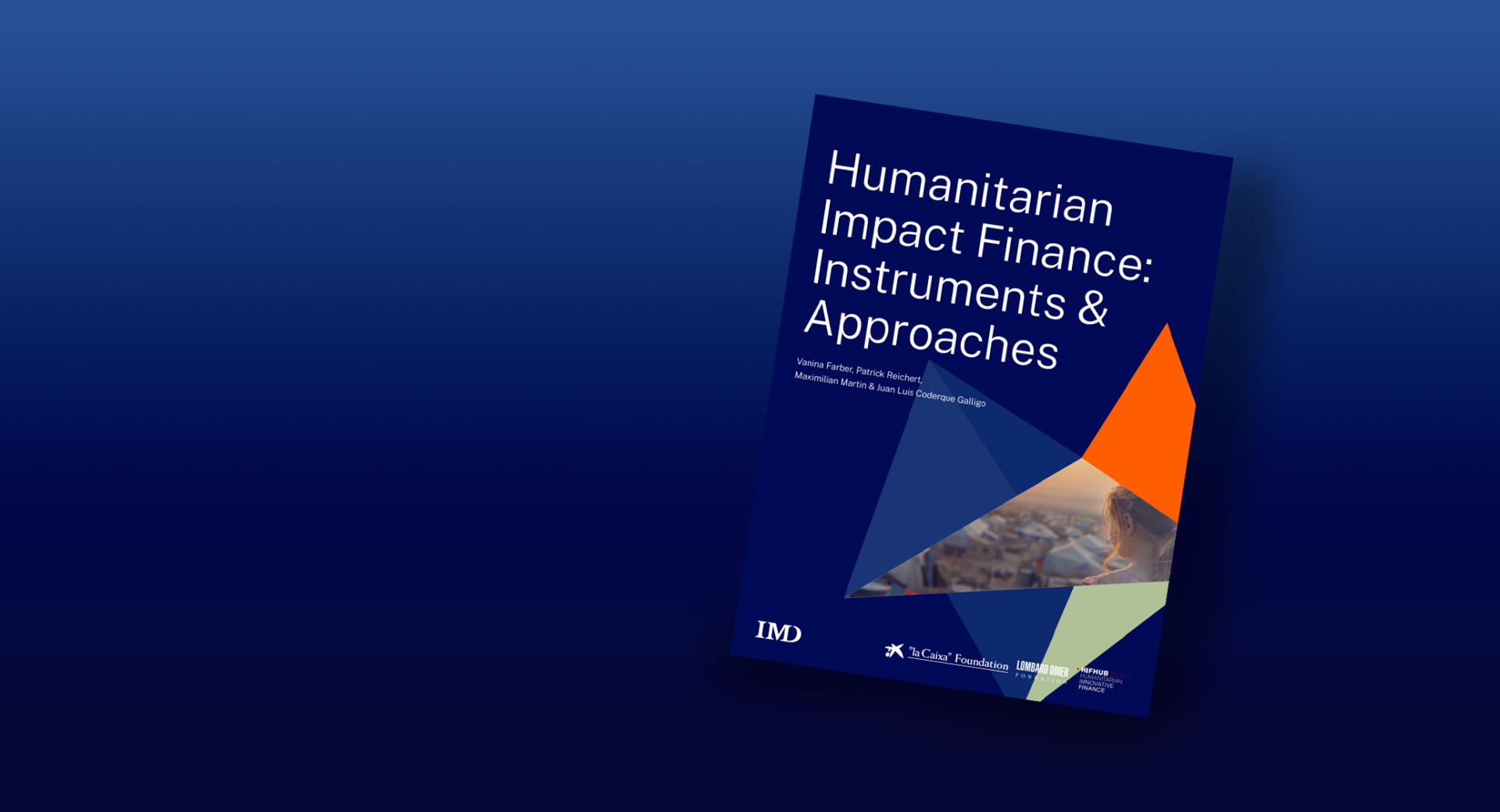
In-depth research from IMD, published in conjunction with Foundation Lombard Odier, the Humanitarian Innovative Finance Hub (HIFHUB) hosted by the Danish Red Cross, and the ”la Caixa” Foundation, highlights how innovative finance models can fund humanitarian projects in areas of protracted conflict and instability.
Humanitarian impact finance (HIF) refers to new types of partnerships across sectors, new ways of working, and new ways of mobilizing additional resources for humanitarian and development outcomes.
The report is the first to map out the current humanitarian impact finance landscape, showing who does what, at what stage, and with what investment criteria. It provides a playbook with concrete examples for change agents looking to successfully develop projects that fulfill humanitarian objectives in more stable contexts of protracted crisis.
The humanitarian system and its financing are under immense pressure from ongoing crises affecting more than 339 million people globally in Ukraine, Gaza, Ethiopia, Syria, Yemen, South Sudan, and beyond. Despite an increase in grant funding to humanitarian organizations from $33bn to $46.9bn over the last five years, the gap between needs and funding continues to grow. In 2023, only 39.5% of requested funding needs were covered.
Humanitarian contexts pose substantial challenges to investors looking for returns (and impact) where risks are high and are often considered “uninvestible.” Building a pipeline of investible projects requires field-based evidence to justify their viability and engagement.
There is a shift from short-term funding via grants to long-term financing through additional financial instruments like debt, equity, and insurance. The shift from funding to financing will be built on partnerships and require cross-sector collaboration.
IMD faculty, mentors, and participants in the Driving Innovative Finance for Impact (DIFI) program offered a rich repository of real-world examples, cutting-edge financial approaches, and insights into how organizational readiness can help humanitarian impact finance partnerships replicate and scale.
“We work to bring people together with a shared goal: scaling impactful solutions that support vulnerable communities,” said DIFI program director, elea Professor of Social Innovation, and Dean of IMD’s EMBA program Vanina Farber. “By building strong partnerships across the private, public, and philanthropic sectors, we can develop financial models that address urgent needs and build long-term resilience in fragile settings.”
HIF provides a finance model that goes beyond traditional grant funding as it introduces a combination of debt, equity, and investment to finance higher-quality infrastructure. These new tools are designed to help lower operational costs, optimize delivery, and support refugees, internally displaced people (IDPs), and local communities.
The report provides an overview of the mechanisms used in HIF, highlighting key lessons and making recommendations for their continued development.
The HIF model encourages the participation of the private sector and emphasizes the need to build internal capacity and readiness to facilitate new investment approaches. It also addresses ethical considerations, ensuring that the new financing mechanisms align with traditional humanitarian principles. While grant-making will remain significant, HIF could make a substantial impact in more stable, protracted crisis contexts.
Facilitating private and development finance to address the long-term effects of crises and instability, rather than immediate, urgent needs, can ultimately free up scarce purely donative dollars to be channeled where they have the highest impact.


